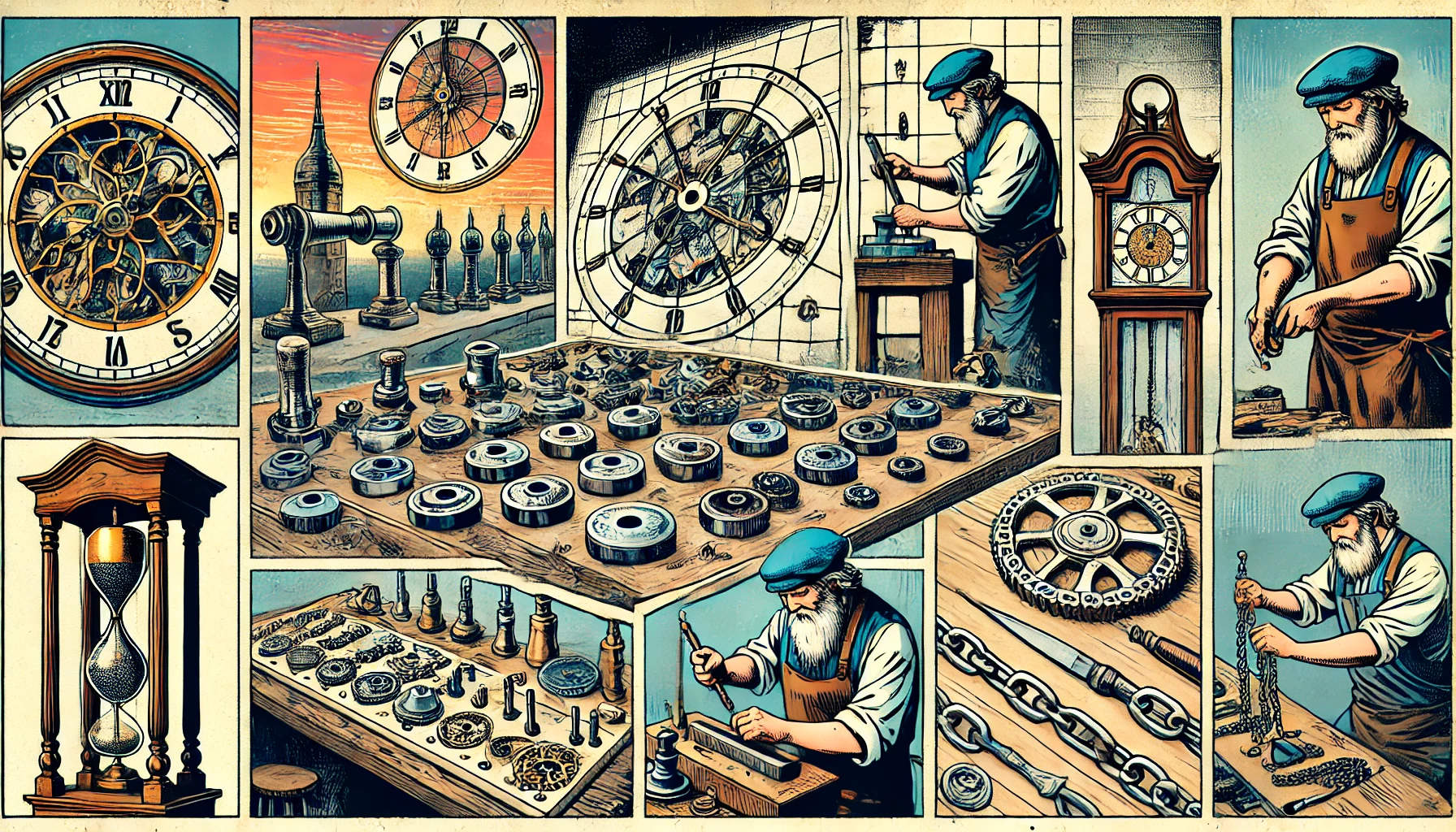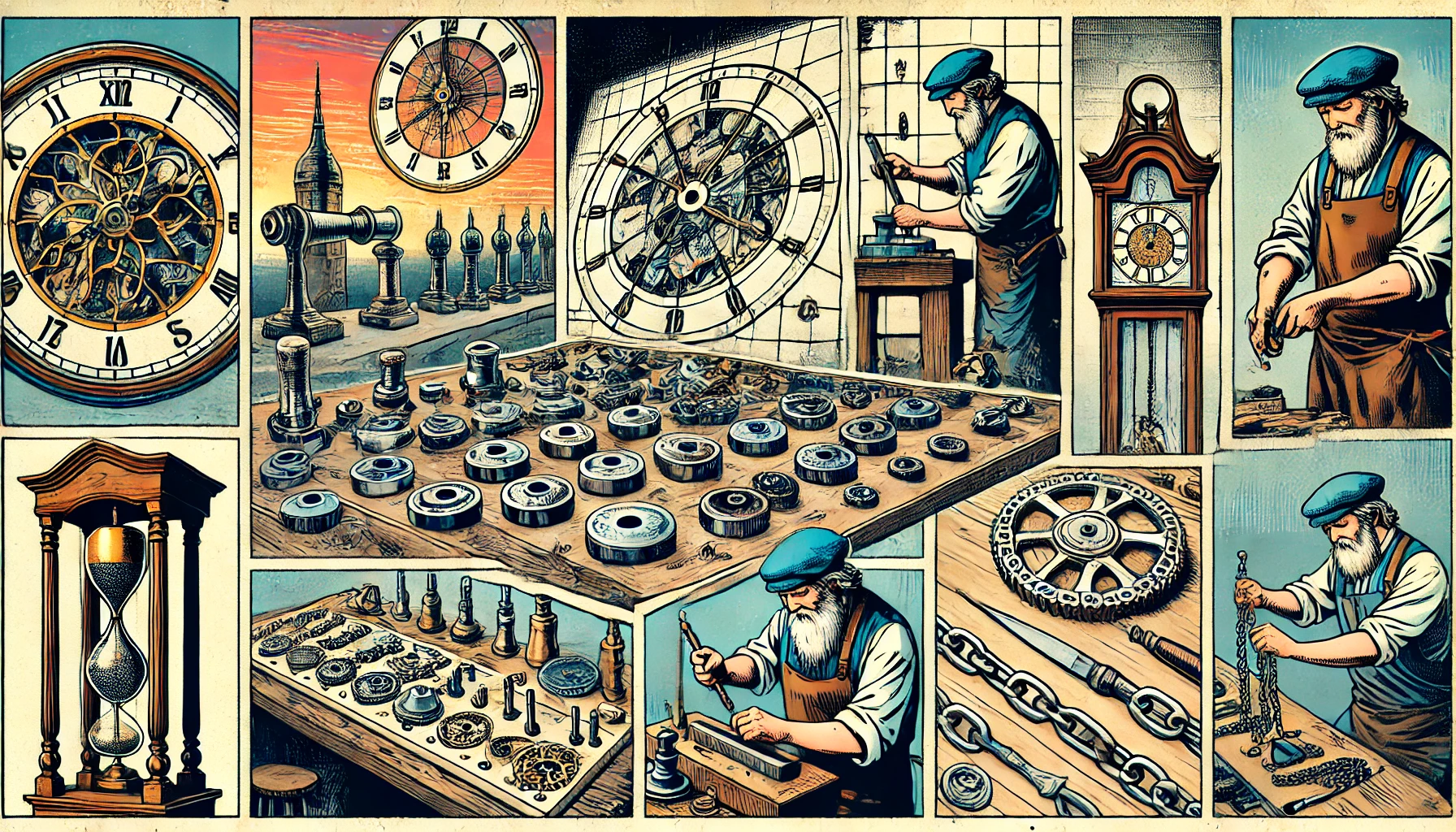Who the heck is a Ketterer – Amongst the most valuable precision craftsmen
“It seems extremely weird that there is absolutely no entry in wikipedia for ketterer…almost like the old and fine craftsmanship of master timekeepers is being slyly subdued.”
https://soundquality.org/2024/06/tumfricos-period-experiment-vs-how-nist-has-removed-time-measurement-from-peasantry/
Exploring the World of Ketterers: Masters of Fixed-Length Metal Chains for Precision Timekeeping
In the realm of horology, where the pursuit of precision timekeeping is paramount, the role of a ketterer stands out as a testament to meticulous craftsmanship and innovation. But what exactly is a ketterer, and why is their work so crucial in the world of clocks and watches? Let’s delve into the fascinating world of ketterers, the artisans behind fixed-length metal chains that ensure the accuracy of timepieces.
What is a Ketterer?
A ketterer is a specialized craftsman who manufactures fixed-length metal chains. These chains are integral components in the mechanisms of certain types of clocks, particularly precision timekeeping devices. The term “ketterer” is derived from the German word “Kette,” meaning chain, reflecting the core of their craft.
The Importance of Fixed-Length Metal Chains in Timekeeping
Fixed-length metal chains play a critical role in the mechanics of clocks, especially in maintaining consistent and precise timekeeping. Here’s why they are so essential:
- Regulation of Power: In clocks, particularly those with a fusee (a cone-shaped pulley), a fixed-length chain is used to transmit power from the mainspring to the gear train. This ensures that the force exerted on the gear train remains constant, which is vital for maintaining accurate timekeeping.
- Durability and Precision: Metal chains, as opposed to other materials, offer durability and resistance to stretching or wear over time. This ensures that the length of the chain remains consistent, preserving the precision of the clock.
- Smooth Operation: Fixed-length chains help in the smooth and uniform transfer of energy within the clock’s mechanism, minimizing fluctuations and enhancing the reliability of the timepiece.
The Craftsmanship of Ketterers
The making of fixed-length metal chains requires a high degree of skill and precision. Here’s an overview of the craftsmanship involved:
- Material Selection: Ketterers carefully select metals that offer the right balance of strength and flexibility. Common materials include brass, steel, and occasionally precious metals for high-end timepieces.
- Chain Construction: The construction of the chain involves creating uniform links that interlock seamlessly. Each link must be meticulously crafted to ensure the overall length remains precise and the chain operates smoothly.
- Quality Control: Precision is paramount. Ketterers employ rigorous quality control measures to ensure each chain meets exact specifications. Any deviation can affect the timekeeping accuracy of the clock.

The Legacy and Modern Relevance of Ketterers
Historically, ketterers played a pivotal role in the development of mechanical clocks, especially during the Renaissance and the subsequent centuries when horology saw significant advancements. Today, while the advent of digital and quartz timekeeping has transformed the industry, the art of making fixed-length metal chains continues to be revered in the realm of luxury mechanical watches and antique clock restoration.
Modern ketterers blend traditional techniques with contemporary technology to create chains that uphold the legacy of precision craftsmanship while meeting the demands of modern timekeeping.
Conclusion
The world of ketterers is a blend of art, science, and precision engineering. These artisans, with their dedication to crafting fixed-length metal chains, ensure that the heart of mechanical timepieces beats with unwavering accuracy. As we continue to cherish and collect mechanical clocks and watches, the expertise of ketterers remains an essential and celebrated facet of horological heritage.
